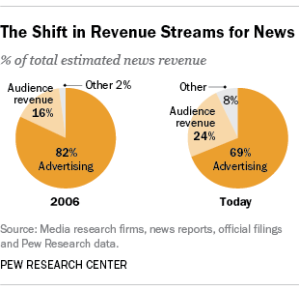

One of the defining features of the Great Recession and not-so-great recovery has been the surge in long-term unemployment. As of March, more than 3.7 million Americans had been out of work for more than six months, according to the Bureau of Labor Statistics, and the median duration of unemployment (seasonally adjusted) was 16.3 weeks — down from the record high of 25 weeks in mid-2010, but well above pre-recession norms.
Analysts have advanced several explanations for the persistence of long-term unemployment: an unintended consequence of extending jobless benefits; a mismatch between the skills unemployed workers have and what employers want; a breakdown in the efficiency of labor markets; or simply bad timing. Whatever the reason, it’s a major concern for policymakers, who fear that many of the long-term unemployed may never find their way back into the workforce.
It may not be an unfounded fear: One recent study sent thousands of mock resumes to employers and found that the longer a candidate had been unemployed, the less interested the employer was in interviewing the candidate. There was a particularly sharp drop-off in interest for candidates with more than six months of joblessness. And earlier this year, researchers from Brookings Institution found that even when the long-term unemployed eventually found work, only 11% were continuously employed in full-time jobs.
Now, new research that examined joblessness in the early 2000s provides evidence that some of the problem might also be geography. A paper written by government and academic experts suggests that living near where the jobs are significantly reduces the amount of time it takes unemployed jobseekers to find work. The research found that to be especially true for blacks, women and older workers.
The so-called “spatial mismatch hypothesis,” which originally grew out of research on the effects of segregated housing markets, has been debated among economists and social scientists since the 1960s. But while there’s general agreement that “job accessibility” has some impact on unemployment duration, researchers have disagreed about how important it is and for which groups of workers.
A team from the Office of the Comptroller of the Currency, the Census Bureau, the University of Maryland and Harvard looked at job accessibility among a particular group of jobseekers: 247,000 lower-earning workers (those making less than $40,000 a year) in nine Great Lakes-region metro areas, all of whom had lost their jobs in mass layoffs. They combined data from the Quarterly Census of Employment and Wages, state unemployment-insurance records and elsewhere to estimate how many jobs, at different pay grades, there were within commuting distance of each jobseeker; whether they were more likely to drive to work or take public transit; and how many other people might be competing for those jobs.
The researchers created accessibility measures for three categories of jobs: any job at all and jobs that paid 75% and 90% of what the laid-off worker’s previous job did. For all jobs, they found that moving from the 25th to the 75th percentile of accessibility reduced unemployment duration by 4.2%; for jobs that paid 90% of the previous job, better job accessibility cut unemployment duration by 7%. Blacks were 71% more sensitive to job accessibility than whites when it came to finding any new job, and 35% more sensitive when it came to finding a job that paid close to their old job.
Although the study was limited to the 2000-05 period, its conclusion — that “a worker with locally inferior access to jobs is likely to have worse labor market outcomes” — could help explain the current situation, depending on where jobs have been lost and created. What we know for sure is that as of March, more than a third (35.7%) of all unemployed Americans had been out of work for more than 26 weeks, according to the BLS. (April data will be released on Friday.) Blacks and Asians are most likely to experience extended joblessness: Last month, 44% of unemployed blacks and about as many unemployed Asians had been out of work longer than 26 weeks, versus a third of unemployed whites and 32% of unemployed Hispanics.
